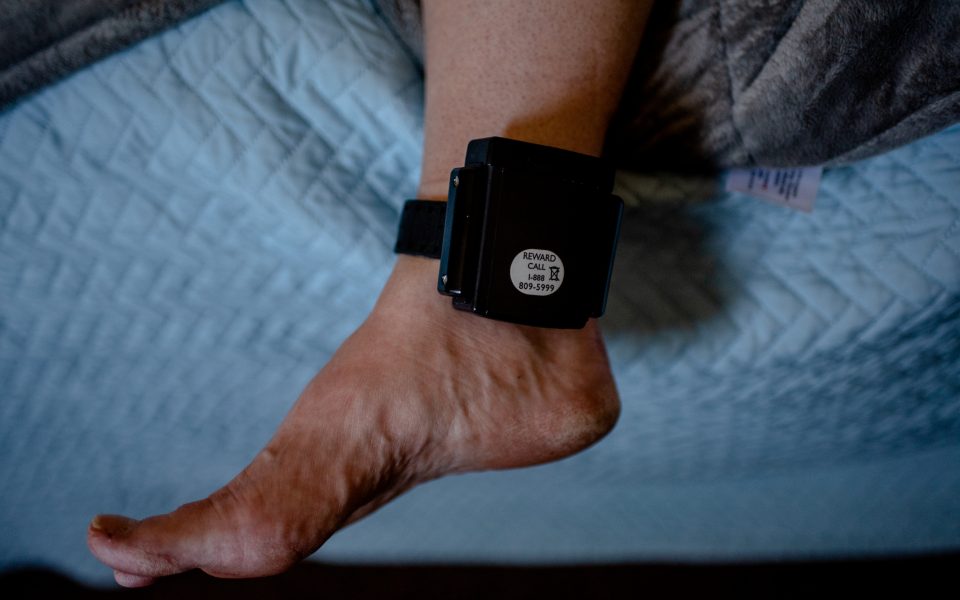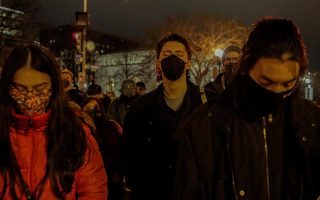Thousands of prisoners were sent home because of Covid. They don’t want to go back.

Ever since she was sent to a sober-living facility six months ago, part of a mass release of nonviolent prisoners to help slow the spread of the coronavirus, Wendy Hechtman has tried to do all the right things.
She is making up for lost time with her children, one of whom was only 6 when Hechtman was locked up roughly three years ago. She goes to weekly drug-counseling sessions. She even got a part-time job helping former inmates reintegrate into society.
But now, Hechtman is among about 4,000 federal offenders who could soon return to prison — not because they violated the terms of their home confinement, but because the United States appears to be moving past the worst of the pandemic.
In the final days of the Trump administration, the Justice Department issued a memo saying inmates whose sentences lasted beyond the “pandemic emergency period” would have to go back to prison. But some lawmakers and criminal justice advocates are urging President Joe Biden to revoke the rule, use his executive power to keep them on home confinement or commute their sentences entirely, arguing that the pandemic offers a glimpse into a different type of punitive system in America, one that relies far less on incarceration.
“If I go to prison for all the time I have left, I won’t have boys anymore. They will be men,” said Hechtman, who is serving a 15-year sentence for conspiracy to distribute a form of fentanyl. “I have so much to lose. And to gain.”
Biden has vowed to make overhauling the criminal justice system a crucial part of his presidency, saying his administration could cut the prison population by more than half and expand programs that offered alternatives to detention.
While the White House has yet to announce a decision about those on home confinement, the administration appears to be following the direction of the Trump-era memo.
Andrew Bates, a spokesman for Biden, said in a statement that the president was “committed to reducing incarceration and helping people reenter society,” but he referred questions about the future of those in home confinement to the Justice Department.
Kristie Breshears, a spokeswoman for the Bureau of Prisons, which is part of the Justice Department, said the bureau would “have the discretion” to allow inmates who were close to the end of their sentences to remain on home confinement even after the national emergency declaration was lifted.
“For the more difficult cases, where inmates still have years left to serve, this will be an issue only after the pandemic is over,” she said. “The president recently extended the national emergency and the Department of Health and Human Services has said the public health crisis is likely to last for the rest of the year.”
The White House revisits the emergency declaration every three months, leaving the former prisoners in a constant state of limbo. The next deadline is in July.
Stacie Demers, who has served nearly half of a 10-year sentence for conspiracy to distribute marijuana, said she felt as if she was “stuck between the beginning and the end, so to speak.” She is currently at her aunt’s home in Albany, New York. “The thing is constantly in the back of my mind: Do I have to go back? Will I not see my family again?”
An alternative to crowded prisons
The United States is believed to be the world’s leader in incarceration, spending $80 billion a year to keep more than 2 million people behind bars.
For nonviolent offenders in particular, home confinement can be a more humane — and cheaper — alternative to already crowded prisons, criminal justice advocates argue.
The United States spent an average of $37,500 to keep a federal inmate such as Hechtman locked up in the 2018 fiscal year. Home confinement, by contrast, costs around $13,000 a year, with expenses including monitoring equipment and paying private contractors to handle supervision, according to a 2017 Government Accountability Office report.
Those pushing for overhauling the prison system say the statistics are on their side. The vast majority of the 24,000 federal prisoners who were released to home confinement because of the coronavirus crisis followed the rules. Most of them had only weeks or months left on their sentences and completed them without incident.
Three people committed new crimes, one of which was violent, Michael Carvajal, director of the Bureau of Prisons, told lawmakers during a Senate judiciary hearing in April. Roughly 150 people were returned to prison for other violations, including about two dozen for leaving their designated homes without authorization.
Kevin Ring, president of the criminal justice advocacy group FAMM, formerly known as Families Against Mandatory Minimums, questioned the wisdom of cases in which people were sent back for technical violations such as online gambling, sending money to other inmates in prison or, in the case of a 76-year-old woman in Baltimore, attending a computer-training class. “That doesn’t make anyone safer,” he said.
Changing the prison system is one of the few areas that has drawn bipartisanship agreement in Washington. Sen. Charles Grassley, R-Iowa, joined Democrats in criticizing the Justice Department memo, which was issued in January.
“Obviously if they can stay where they are, it’s going to save the taxpayers a lot of money,” Grassley said at the hearing. “It will also help people who aren’t prone to reoffend and allows inmates to successfully reenter society as productive citizens.”
Inmates are typically allowed to serve the final six months, or 10%, of their sentence on home confinement. The legal memo issued by the Trump administration argued that the roughly 4,000 inmates whose sentences would almost certainly outlast the pandemic would need to return to prison because they do not fit the usual eligibility requirements for home confinement.
Larry Cosme, national president of the Federal Law Enforcement Officers Association, which represents probation officials, cautioned against changing those requirements without a proper review.
“It’s good to have adequate prison reform and get with the times, but you have to do it meaningfully, with an adequate amount of personnel,” Cosme said. “Make sure the system works and not setting someone up for failure.”
He also said the releases put a strain on those responsible for monitoring the inmates.
Carvajal said that while the Bureau of Prisons supported the reintegration of inmates, other issues were at play.
“The whole point of this is that they’re going back to society at some point,” Carvajal said. “We also respect the fact, though, that these sentences were imposed by the criminal justice system in a court of law.”
Inimai Chettiar, federal director for the Justice Action Network, which consulted with the Biden campaign on criminal justice measures, said the prison system had needed to be overhauled for years. She said Biden should not only rescind the memo, but also use his executive power to issue clemency for the inmates.
“I worry that their commitment to ensuring DOJ’s independence is getting in the way of their commitment to racial justice and criminal justice,” Chettiar said of the Biden administration. “This is a fairly easy thing to do. This is not passing bipartisan policing legislation. It’s not some massive new executive action. It’s simply someone typing something up on a one sheet piece of paper.”
‘They won’t take care of me’
For some inmates, being released to home confinement has meant gaining access to lifesaving resources and support systems that they say were scarce from within prison walls.
Jorge Maldonado, 53, who has kidney disease, was released in October because his poor health made him especially vulnerable to the coronavirus. He has served five years of a seven-year sentence for fraud and theft, much of it in a federal prison in North Carolina that has been hard hit by the virus.
Maldonado, a veteran of Operation Desert Storm in the early 1990s, now receives dialysis 10 hours a day using a catheter through his abdomen as he waits for a new kidney, which would be his third kidney transplant.
He said being at home in Oviedo, Florida, outside Orlando, had allowed him to receive the medical care he needed through the Department of Veterans Affairs health system.
But Maldonado has 18 months left on his sentence.
“They won’t take care of me, healthwise, the way the VA does,” he said of the Bureau of Prisons, which has been frequently criticized for the quality of its medical care.
Maldonado also questioned why he might be forced to return to prison with only a year and a half left in his sentence.
“If somebody is doing what they should be doing, and proven that they’re not really a menace to this community, to society, then what’s the problem?” he asked.
Hechtman has nine years left on her sentence after she was caught producing a chemical analogue of fentanyl in 2017.
“I get it,” she said as she expressed remorse for selling to others in Omaha, Nebraska, where she was arrested. “This is not a get-out-of-jail-free card, but what it is is an opportunity card.”
At the sober-living home in New Haven, Hechtman said she did not need to worry about being exposed to the opioids she often saw peddled throughout prison. She starts her day by logging on to her computer in her 10-foot-by-12-foot room and working at her part-time job working with former prisoners.
To go for a walk in the park or even travel 20 yards to take out the trash, she must submit a request to a contractor working for the government.
When she leaves her home, she wears a black monitor on her right ankle and activates an app on her phone that allows government officials to track her.
Hechtman said she had yet to miss one of her weekly counseling sessions. She recalled that when she was in the minimum-security facility in Danbury, Connecticut, she often had to wait for weeks before getting approved for counseling for addiction.
“She has hope now, and she didn’t have that,” said Kathryn Pérusse, Hechtman’s 22-year-old daughter, who lives in Montreal. “She needed a support system, and that’s also another thing she couldn’t have inside.”
Hechtman often notes that a release to home confinement does not equate to absolute freedom. She still has not seen Pérusse or her three other children, including the 9-year-old son with whom she video chats regularly.
She is not authorized to visit them in Canada. She said her relatives had not yet visited her because of arduous quarantine requirements in place because of the pandemic.
Hechtman said she hoped she would see them outside of a prison visitation room for the first time in more than three years before she was sent back.
[This article originally appeared in The New York Times.]






